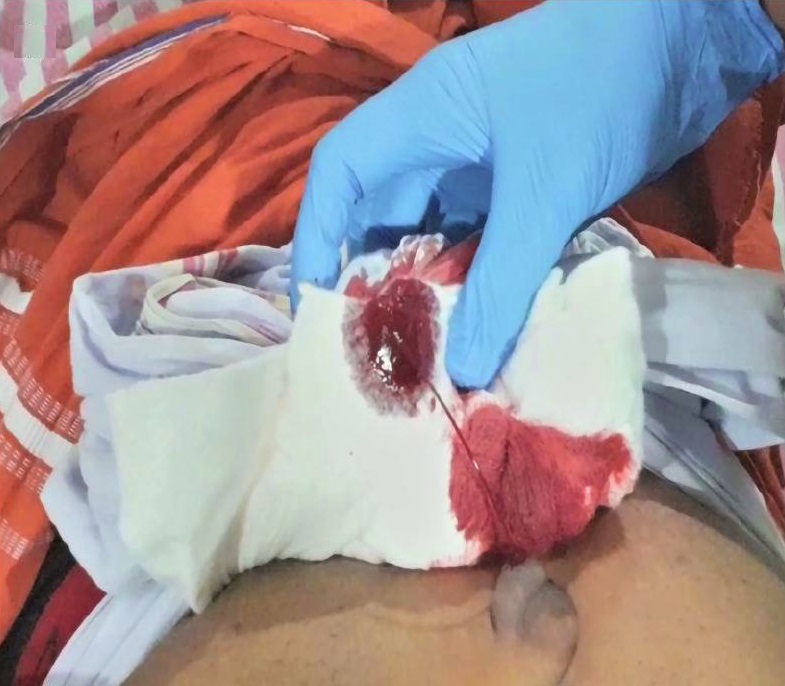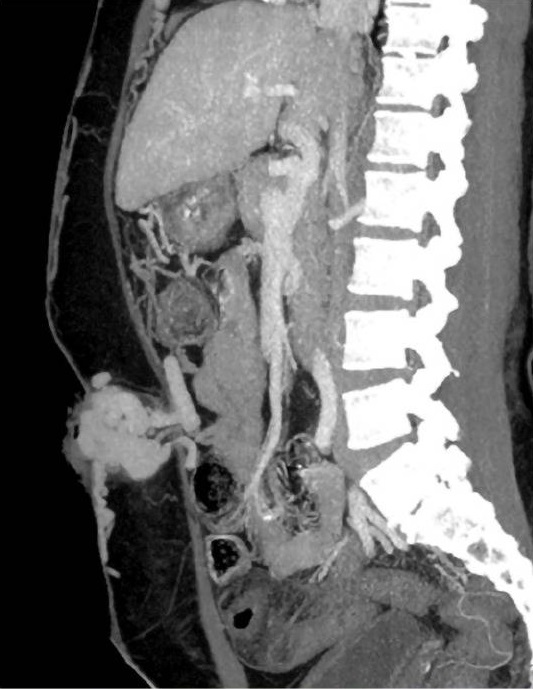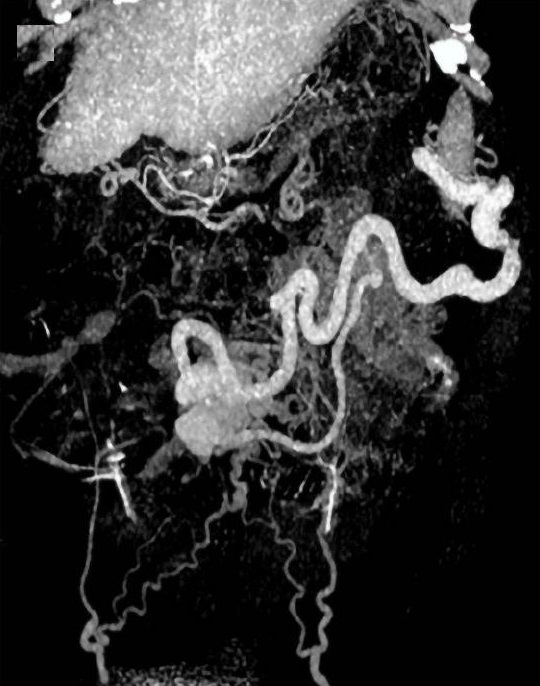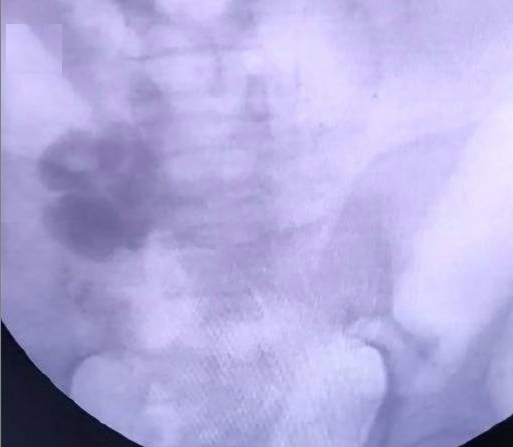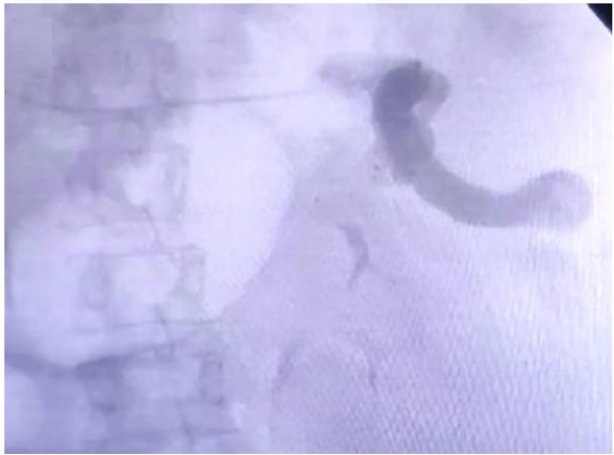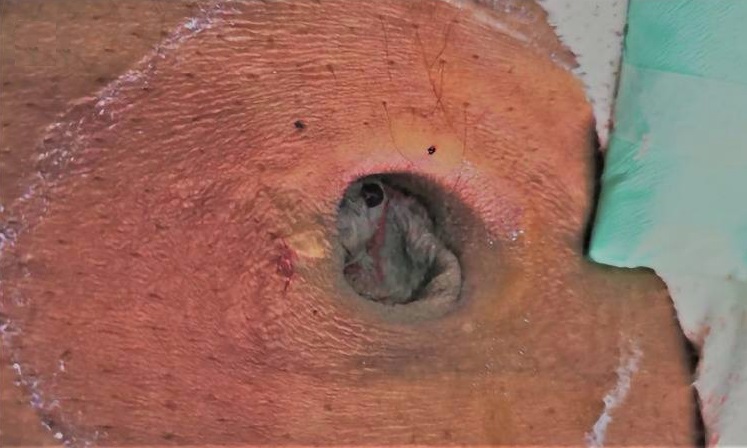The term ectopic varices are used to describe portosystemic collaterals located at sites other than the gastroesophageal region.
异位静脉曲张一词被用来描述位于胃食管区域以外部位的门体侧支。
Stomal varices are the most common, followed by small bowel (predominantly duodenum), colon, rectum, and peritoneum.
胃内静脉曲张是最常见的,其次是小肠(主要是十二指肠)、结肠、直肠和腹膜腔。
Rare sites include the biliary tree, umbilicus, and pelvic organs[47].
罕见的部位包括胆道树、脐带和盆腔器官[47]。
Bleeding from ectopic varices represents an uncommon but challenging clinical problem.
异位静脉曲张出血是一个不常见但具有挑战性的临床问题。
The prevalence ranges between 1%-5% of all variceal bleeds with a higher prevalence (up to 40%) seen in patients with extrahepatic PH and after surgery[47-49].
患病率在所有静脉曲张出血的1%-5%之间,肝外PH(非肝硬化)患者和术后的出血率更高(高达40%)[47-49]。
Postoperative adhesions and the creation of an enterostomy can facilitate the formation of portosystemic collaterals.
术后粘连和肠造口术的形成可以促进门体侧脉的形成。
Depending on the location of varices, clinical presentation, and available local expertise, the management of bleeding ectopic varices can differ.
根据静脉曲张的位置、临床表现和不同专业医生知识,出血性异位静脉曲张的处理可能会有所不同。
After initial resuscitation and pharmacological treatment, the treatment options include endoscopic management, percutaneous variceal embolization, TIPS, or surgical therapies[50].
在初始复苏和药物治疗后,治疗方案包括内镜、经皮静脉曲张栓塞、TIPS或手术治疗[50]。
Endoscopic therapy is often not feasible or successful due to an inaccessible location.
内镜治疗往往不可行或因为无入路而不成功。
Percutaneous variceal embolization using balloon-occluded sclerotherapy, coils, glue, gel foam, thrombin, or a combination of these is an effective short-term therapy for bleeding ectopic varices.
使用球囊闭塞静脉曲张硬化治疗、弹簧栓子、胶、明胶海绵、凝血酶或联合应用,进行经皮静脉曲张栓塞是治疗异位静脉曲张出血短期有效的静脉曲张治疗方法。
However, it fails to decompress the portal venous system resulting in high 1-year rebleeding rates.
然而,它不能减压门静脉系统,导致高达1年左右再出血率。
Surgical treatment options such as local suturing, segmental bowel resection, devascularisation procedures, or stomal revision are associated with a high risk of recurrence[50].
手术治疗方案,如局部缝合、节段性肠切除术、去血管化或造口改造,有[50高]复发风险。
TIPS has shown excellent results in achieving initial hemostasis and reducing the incidence of recurrent bleeds.
TIPS在实现初始止血和减少复发性出血的发生率方面已经显示出了良好的效果。
However, the available evidence is limited to case reports, small case series, and related reviews[50-54].
然而,现有的证据仅限于病例报告、小样本病例报告和相关的文献复习[50-54]。
A recent multicentre cohort study showed that TIPS was particularly effective in patients with less severe liver disease and those with stomal varices[50].
最近的一项多中心队列研究表明,TIPS对较轻的肝病患者和胃底静脉曲张[50]患者特别有效。
Contrarily, the rebleeding risk in patients with duodenal varices was surprisingly high.
相反,十二指肠静脉曲张患者的再出血风险令人惊讶地高。
Rebleeding in 75% of patients was associated with TIPS stent dysfunction.
75%的(异位静脉曲张TIPS术后)患者再出血与TIPS支架功能障碍相关。
Multiple studies have shown that patients with ectopic varices can rebleed after TIPS despite the achievement of hemodynamic target and stent patency[51,52].
多项研究表明,尽管实现了血流动力学靶点和支架通畅性[51,52],但伴有异位静脉曲张的患者在TIPS后仍可再出血。
Notably, the overall risk of rebleeding after TIPS in patients with ectopic varices was significantly higher than in patients with gastroesophageal variceal bleeding (23% vs 0-6%, respectively, at 1 year)[50].
值得注意的是,异位静脉曲张患者TIPS后再出血的总风险明显高于胃食管静脉曲张出血患者(1年时分别为23%vs0-6%)[50]。
This discrepancy can be explained by the anatomical differences between varices at these two sites.
这种差异可以用这两个部位的静脉曲张之间的解剖学差异来解释。
It has been suggested that unlike gastroesophageal varices, ectopic varices are true veins and are likely to have larger diameters resulting in greater wall tension resulting in higher rates of bleeding[55,56].
有人认为,与胃食管静脉曲张不同,异位静脉曲张是真正的静脉,可能有更大的直径,导致更大的壁张力,导致更高的[55,56]出血率。
Based on this, few authors recommend concomitant embolization of variceal complex during TIPS (Figure (Figure4).
基于此,很少有作者建议在TIPS期间同时栓塞静脉曲张丛
In the series by Vangeli et al[51], rebleeding was more commonly seen in those who had TIPS alone compared to those who had concomitant variceal embolization.
在Vangeli等[51]的系列研究中,与合并静脉曲张栓塞患者相比,单纯TIPS患者更常见再出血。
Furthermore, they also found that the rebleeding in the majority of patients responded to subsequent variceal embolization.
此外,他们还发现,大多数患者的再出血对随后的静脉曲张栓塞有反应。
However, multiple other studies have reported contradictory results[52-54].
然而,其他多项研究也报告了相互矛盾的结果[52-54]。
Technically, variceal embolization in this setting can be difficult since ectopic varices are frequently multiple, tortuous, and complex, and access to them may be challenging.
从技术上讲,在这种情况下进行静脉曲张栓塞是困难的,因为异位静脉曲张通常是多发、迂曲和复杂的,而且获得它们入路可能具有挑战性。
Even when accessible, complete obliteration of ectopic varices may not be possible because of the presence of other communications with the systemic or mesenteric venous system. |


